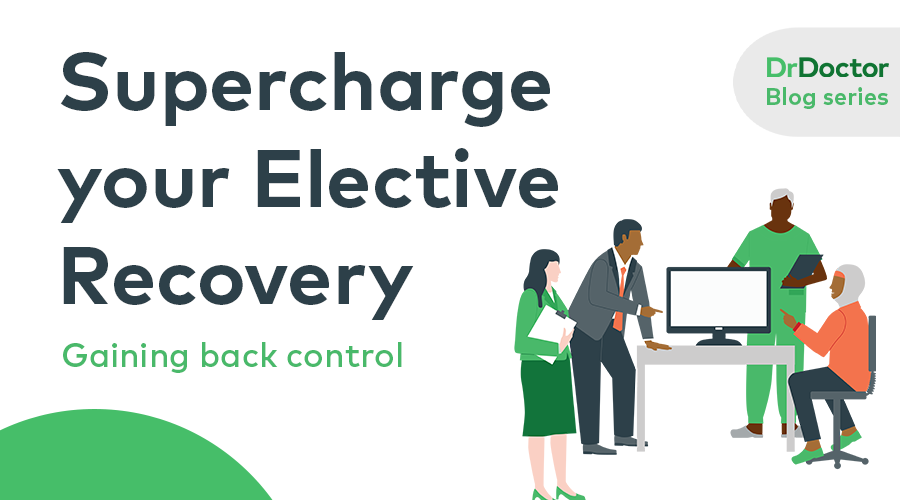Supercharge Your Elective Recovery - Gaining Back Control
Topics: Industry insights

Along with all other aspects of our lives, Covid-19 caused hospital systems as we know it to grind to a halt, with many appointments, clinics and elective surgeries being put on hold.
The reality is the NHS has been managing day to day demand, which was already at peak capacity, whilst getting through a backlog of appointments long before the 2020 pandemic hit.
Fast forward to the present day, Trusts are now under huge amounts of pressure to reduce their waitlist numbers, whilst patients are waiting months for care they so desperately need.
At DrDoctor we’ve been working hard to create the fastest, safest and most efficient way to kickstart elective recovery: A digital first model delivered in three stages; React, Transform and Sustain.
The first stage, React, delivers an instant impact on elective lists by implementing technology quickly. This immediately improves waitlist quality and re-engages patients who have had their care disrupted.
By using validation tools such as DrDoctor Quick Question and DrDoctor Broadcast Messaging, hospitals can clear waiting lists based on patient information by asking the simple question – do you still need to be seen?
The result is an instant reduction in waiting lists of 6% - 27%
DrDoctor validation tools can be deployed within just one day, and admin teams will save five minutes for every patient validated digitally vs manually.
The next step is to stratify patients based on the greatest need and allocate them to the right pathway, which is crucial to removing demand on the system and managing patient risk.
With stratification tools such as DrDoctor Assessments, your team can decide what is the safest and most effective pathway for each patient, based on the most important clinical risk factors.
By collecting as much up to date information from the patient as possible, the decision making is made easier. DrDoctor Assessments are used across 21 clinical specialties, from Dermatology to Oncology, and it takes hospitals just two weeks to get set up with the tools needed to begin stratification.
In the Transform stage, both hospital-led and patient-led scheduling solutions are used to see patients in the most appropriate format. Patients appointments are scheduled based on need as identified during stratification.
As an example, by enrolling patients to a digital follow-up needs assessment pathway, there is a 30% reduction in face to face appointments.
There are over 10,000 booking models facilitated through the DrDoctor Patient Engagement Platform and scalable scheduling tools take just 4-8 weeks to install.
After scheduling, hospitals and patients can get the most out of attending appointments and make them as effective as possible by using digital solutions.
Pre-Clinic assessments collect clinical data from patients in advance of the appointment, to make the consultation time more valuable for both the patient and the clinical team.
Hospitals can make it even easier for patients to attend remote appointments by onboarding them to DrDoctor Integrated Video Consultations, which have a proven reduction in DNA rates.
By automating the screening of patients for COVID-19 before face to face appointments, it creates safer walk-in clinics for everyone.
In the final stage, Sustain, by combining highly engaged patients, data-driven decision making, and interactions delivered remotely by default, every hospital delivers digital-first care services aligned to patient needs.
Every organisation undergoes a different transformation journey. Having reacted to gain control and transformed services to meet demand, care teams are continuously supported to refine and enhance their care pathways to meet ever changing needs.
Healthcare has long faced the challenge of demand growing faster than supply. The DrDoctor Patient Engagement Platform can be used for effective elective recovery, and double the impact each clinical team can have without sacrificing care quality.
